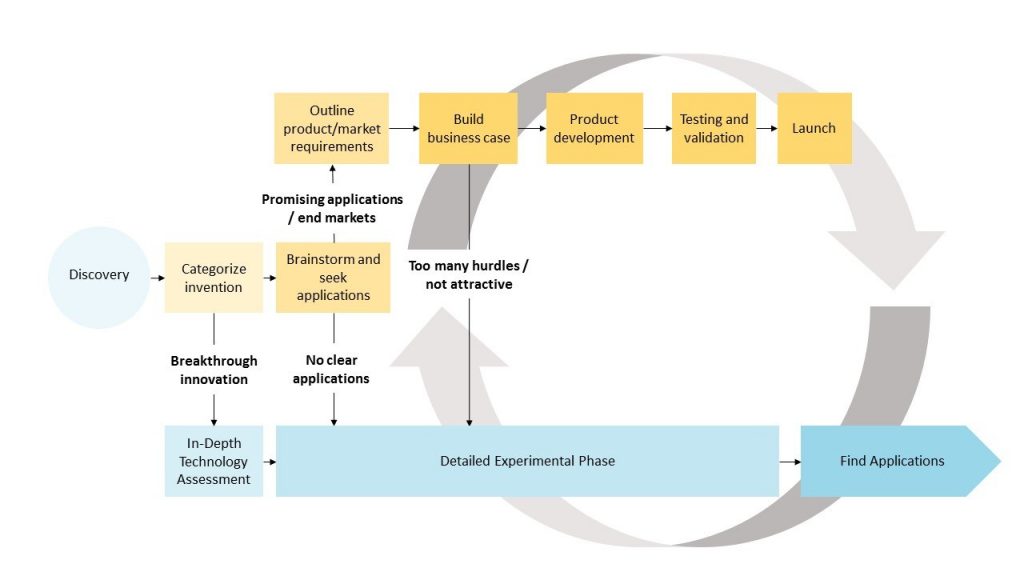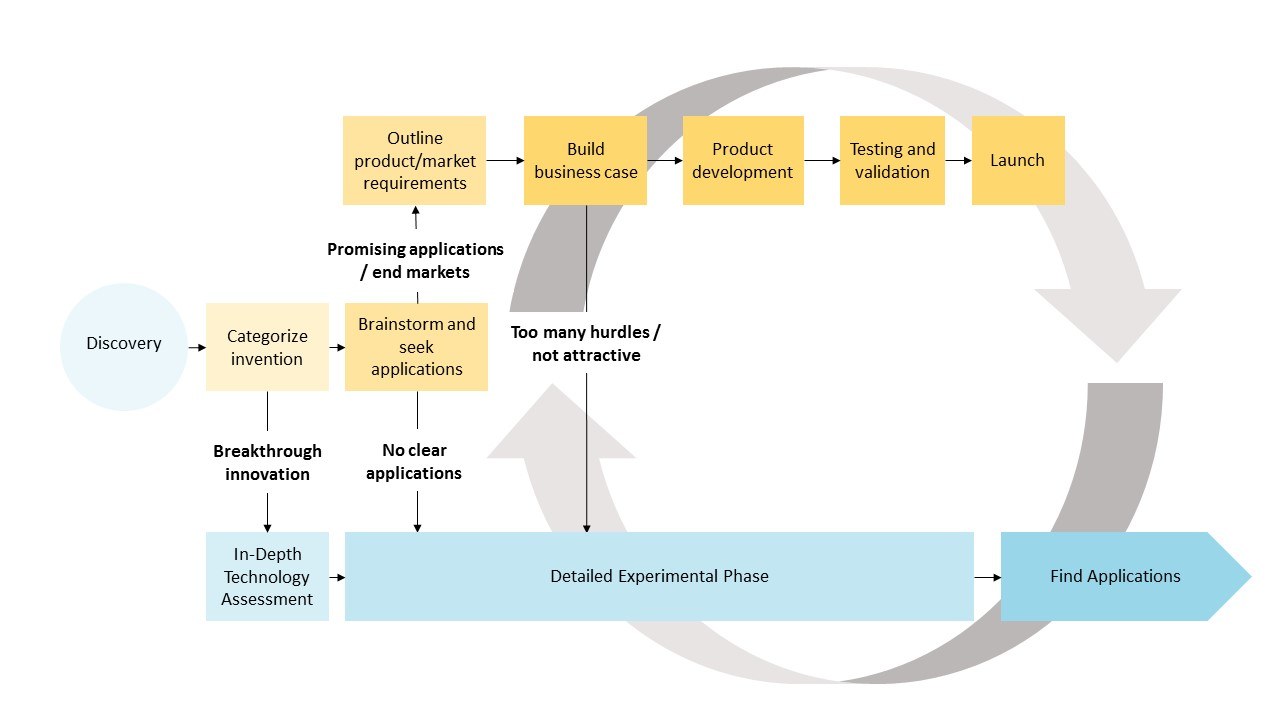How To Get ROI Today Without Sacrificing Future R&D Innovation
For decades, world-leading innovators like DuPont, GE, and Corning have based their success on technology development driven by fundamental research. Despite the long timelines and high risk involved in creating revolutionary new inventions, these companies have invested massive resources in innovating on the bleeding edge. Why? Because they understand that, while dividends from technology development are never short-term, the outcomes it produces are integral to profitable longevity.
Indeed, many of these companies’ most successful products were created as byproducts of the process of solving fundamental problems. Edison, for instance, was more focused on developing an entire electric system for delivering light than on designing a simple fixture, and Wallace Carothers and his team were more interested in making super polymer materials than crafting the world’s greatest pair of stockings, but in the course of pursuing those lofty goals, they created some of the most important and familiar products in the world: light bulbs and nylons. These sorts of discoveries – game-changing technologies that come into being as the result of scientists exploring the outer limits of our physical world – are what innovators count on when devoting resources to technology development.
The problem is that investors today are not particularly interested in the long haul; they want short-term returns, and it’s tough to satisfy their wishes with traditional technology development. Fundamental research takes time – years, or even decades – and it is not a commercially oriented process. In many cases, organizations won’t even start looking at target applications until a technology has been fully developed. As a result, successful outcomes aren’t guaranteed, and sometimes, the years of work and millions of dollars poured into a single project end up amounting to virtually nothing. Stakeholders are (understandably) not always keen to place big bets on such an unpredictable process.

The traditional path of technology development can take many, many years to produce results
Defending this process (and the budget associated with it) to an impatient, results-driven audience can be tough, but we think there’s a way for CEOs and CTOs to mollify investors while also maintaining their commitment to groundbreaking research. This method does not reject the traditional path of technology development but instead supplements it with iterative screening processes to determine which research projects have lots of near-term commercial potential and which have less – not to kill the projects that don’t have clear end applications, but to fast-track the development plan for the ones that do. It looks something like this:

A hybrid path of technology development enables you to monetize promising projects more rapidly
There are four concrete steps to adopting this hybrid model of technology development:
- Categorize your invention. Determine if what you have discovered is a breakthrough innovation or not, then categorize it as either an entirely new product or a new innovative process. Is it a set of novel materials with unique attributes, or a novel process that can make existing materials better with improved attributes?
- Seek out opportunities. More often than not, it’s possible to tie breakthrough innovations to target end markets or applications. Surface the top three or four potential applications, and then prioritize based on market size, fit with your growth strategy, synergies with existing business, etc. Focus in particular on how your discovery might create value for future customers: could it lead to new sales for them? Could it help them be more profitable? Once you’ve answered these questions, understand the product requirements and determine what technology barriers would have to be overcome to get the product ready for the market – and how much development it would take for your discovery to get there.
- Get serious about business opportunities. If there is an end market where your discovery has high potential to create value, and you have strong ability to capture that value, then start building a business case immediately. If it’s attractive and meets the top- and bottom-line objectives of your company, stop throwing resources at the original technology development path. At this point, the goal is no longer to solve a fundamental problem, but to address a concrete commercial opportunity. This stage is where feelings get hurt and miscommunications happen, so make sure that everyone – scientists and business folks – knows what’s going on and are fully invested in achieving the same goal. Put a focused development plan in place, pass your technology through stage-gate or whichever phase review process you use, and get it to market.
- Go back to the fundamental path if needed. If you don’t find any solid target applications, or the technical hurdles seem to be insurmountably high, or the time to market is too long, or the business case feels shaky, then simply continue on the fundamental development path. Let your scientists keep solving the problem they set out to solve – further development could uncover more opportunities.
This process works best when it’s iterative, so make it a priority to check back in regularly and reevaluate whether or not any projects could be pulled out and commercialized to address a customer need. It may feel anathema at first, especially to research scientists accustomed to running their ideas to ground, but by proving the immediate value of your technology development pipeline to investors, this four-step mechanism will also set the groundwork for future innovation – and long-term success.
Find out how Newry can help your organization move smarter to move faster. Get traction in your market.

